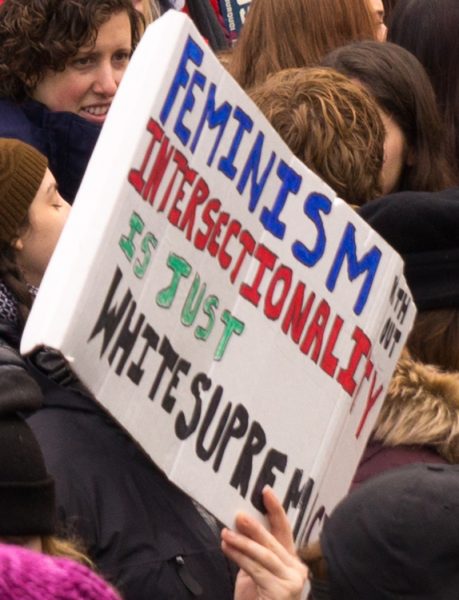
“Intersectionality” — a concept used to help understand the complexity of the social identities, institutions, and experiences — is moving from a buzzword in scholarly and activist communities to more popular mainstream use. The concept refers to an understanding that our lives are always shaped by many factors, like the economy, racism, sexism, family dynamics, education, and our social support systems. For Black History Month, we take a closer look at the women of color who helped bring this term to our everyday language.
In the United States, intersectional work among Black feminists arose out of the need to recognize the experiences of Black women as multiply marginalized. Black women faced oppression along the lines of both gender and race. For instance, Black feminists faced exclusion and oppression from both antiracist movements that fought for justice primarily for Black men, as well as feminist movements that centered white women’s experiences of patriarchy. Out of this exclusion came work like The Black Woman, edited by Toni Cade Bambara, demonstrating that Black women would never gain freedom without attention to their marginalization along the lines of gender, race, and class. Work by Black Lesbian feminists like Audrey Lorde and Barbara Smith also highlighted the ways (hetero)sexuality served as axis of marginalization for LGBTQ+ persons.
- Patricia Hill Collins. 2000. Black Feminist Thought: Knowledge, Consciousness, and the Politics of Empowerment. Routledge.
- Angela Davis. 1983. Women, Race & Class. Vintage Books.
- Combahee River Collective. 1986. “Combahee River Collective Statement.”
- bell hooks.1981. Ain’t I A Woman: Black Women and Feminism. South End Press.
- Audrey Lorde. 1984. Sister Outsider.
- Barbara Smith. 1978. “Toward a Black Feminist Criticism.” Radical Teacher 7: 20-27.
However, Black women were not the only women of color actively pushing for intersectional analyses at this time. Chicana and Indigenous feminists were also leading their own distinct social movements, in addition to entering alliances with Black feminists. Much of this work gives voice to women of color, highlighting intersecting oppressions and differences within women of color as an oppressed group. For example, Anzaldúa’s work focuses on intersectionality at the borders. She writes about the physical U.S.-Mexico border in Texas, as well as the symbolic borders she experiences as a part of Mexican, Indigenous, and white worlds.
- Gloria Anzaldúa. 1987. Borderlands/La Frontera: The New Mestiza. Aunt Lute Books.
- Cherríe Moraga and Gloria Anzaldúa. 1983. This Bridge Called My Back: Writings by Radical Women of Color. Kitchen Table: Women of Color Press.
Many attribute the coining of the term, intersectionality, to Kimberlé Crenshaw. However, Crenshaw herself denies credit, noting that women of color feminists have been doing intersectional academic work and activism informed by intersectionality long before universities and other institutions recognized its importance. In fact, Patricia Hill Collins and Sirma Bilge liken the story of intersectionality’s “coining” to colonizers’ “discoveries” and naming of lands that had been inhabited by indigenous peoples for years.
- Kimberlé Crenshaw. 1991. “Mapping the Margins: Intersectionality, Identity Politics, and Violence Against Women of Color.” Stanford Law Review 43(6): 1241–1299.
- Patricia Hill Collins and Sirma Bilge. 2016. Intersectionality. Polity.
It is important to remember that concepts like intersectionality are rarely created alone. Instead, they are collaborative efforts with histories and contexts that are vital to understanding the concept itself. As we celebrate Black History Month, let’s also remember that there is no single axis of Black history. Black history is intersectional.

Comments 1
Todd Beer — February 24, 2019
Also, check out the newly published,
Black Feminism Reimagined: After Intersectionality
by Jennifer C. Nash
https://www.dukeupress.edu/black-feminism-reimagined